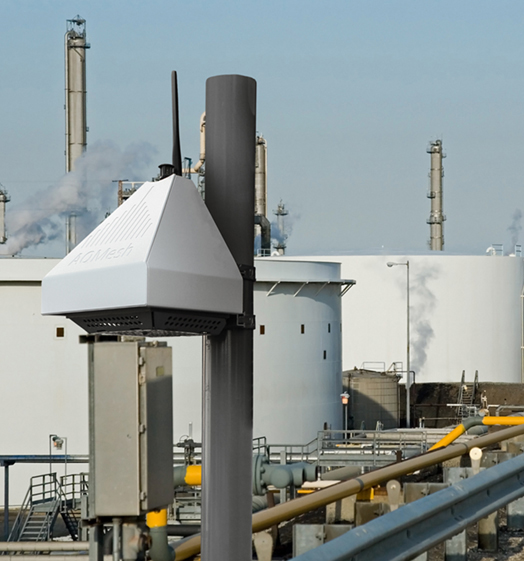 AQMesh has been measuring ozone (O3) using small sensors since 2011 and the readings from the latest generation electrochemical sensor, using AQMesh v4.2.3 processing, as compared to co-located certified reference readings, consistently show an R2 of over 0.9 with an accuracy ±10ppb (20µg/m3).
AQMesh has been measuring ozone (O3) using small sensors since 2011 and the readings from the latest generation electrochemical sensor, using AQMesh v4.2.3 processing, as compared to co-located certified reference readings, consistently show an R2 of over 0.9 with an accuracy ±10ppb (20µg/m3).
AQMesh pods have been measuring ozone levels around the world and co-location comparison studies show very good performance against reference equipment from the latest sensor and processing version. Ozone levels have been particularly high across Western Europe over this summer but are a regular concern in many parts of the world, including the USA. However, there are huge gaps between O3 monitoring points, to different degrees across the world, depending on monitoring equipment budgets. A lower cost small-sensor monitoring solution can provide valuable data within the areas currently lacking in this air quality information. Data validity is typically demonstrated by comparison with a local reference station, although AQMesh is also widely used where no reference data is available.
O3 at ground level is formed by reactions with nitrogen oxides (NOx) and volatile organic compounds (VOCs) from traffic and industrial emissions in the presence of sunlight. As such, hotter, sunnier weather can dramatically increase O3 pollution.
The World Health Organisation (WHO) currently states the daily limit of O3 levels to be 100μg/m3 over an 8-hour mean and advise that prolonged exposure to high levels of O3 can have severe effects on human health, including causing asthma, inflammation of the airways, reduced lung functionality and lung disease. Measuring O3 as a part of an air quality monitoring routine is therefore becoming increasingly important, especially in hotter climates and areas of increased VOC emissions.
O3 can be complicated to measure due to its high sensitivity to environmental conditions and cross-gas effects. Most small sensors for measuring O3 are either electrochemical or metal oxide, but electrochemical sensors (such as those used in AQMesh) have the advantage of low power requirements and can therefore be installed more flexibly. AQMesh pods are compact, wireless units and are available with a variety of power options, including solar panels, which allow them to be installed exactly where monitoring needs to take place.
During summer 2018 AQMesh has been measuring ozone at hundreds of locations across five continents and co-location comparisons show consistently high levels of accuracy. To quote two of many such studies, in an industrial region of the USA, AQMesh O3 measurements compared to FEM gave an R2 of 0.97, and in a similar comparison study in Western Europe the R2 value for O3 was 0.95. AQMesh pods measuring gases can run continuously for over two years using a battery but other power options are available, including solar. Particulate matter (TPC, PM1, PM2.5, PM10) can also monitored with an AQMesh pod, alongside gases including NO, NO2, O3, CO, SO2, CO2 and H2S, as well as pod temperature, RH% and pressure.
The accuracy of AQMesh readings has been proven through an extensive series of global co-location comparison trials and is the proven, commercially available low-cost air quality monitoring system for both pollutant gases and particulate matter, as well as simultaneously monitoring a range of environmental conditions.
—–
